C.T.L SELVEDGE DENIM 11.3oz
弁柄 有機綿 麻 セルヴィッチデニム

< C.T.L SELVEDGE DENIM 11.3oz – に関して >
“それは藍とベンガラで染められた糸で織られていた“
濃い藍と薄い藍の縞模様の両端にベンガラの耳がついており
その中に藍でリズム良く刻み模様が入れられている
規則性の中に不規則性があり
一目見て美しいと感じた
自然を記号的に表現したような模様と
藍とベンガラの完璧な調和
倉敷本染手織研究所にて外村吉之介考案のタペストリーに出会う
思考中だった
オリジナルデニムのセルビッチに紐付いた
< About C.T.L SELVEDGE DENIM 11.3oz >
“Woven with threads dyed with Indigo and Bengala.”
There are dark Indigo and light Indigo stripes with Bengala ears on both sides,
inside which a rhythmic pattern is etched with Indigo.
Irregularities are present within the regularity, and the beauty registers with the first glance.
The pattern appears to symbolically express nature and a perfect harmony exists between Indigo and Bengala.
Encountering a tapestry designed by Kichinosuke Tonomura at the Kurashiki Dyeing, Spinning & Weaving Studio
This led to the creation of the selvage of the original denim we were in the process of conceiving.
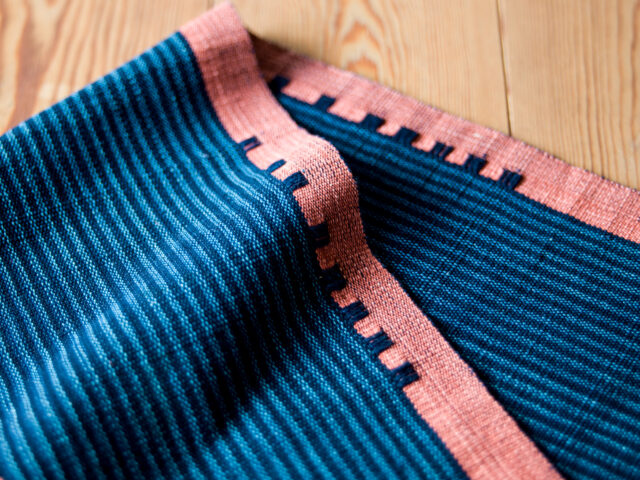

倉敷の歴史である手工芸(民藝)と工業製品(繊維産業)の歴史の架け橋となるものとして
C.T.L SELVEDGE DENIM 11.3oz は誕生した
In this way, C.T.L SELVEDGE DENIM 11.3oz was born as a bridge between the history of the handcrafts (“mingei,” or folk art) and that of industrial products (textile industry).

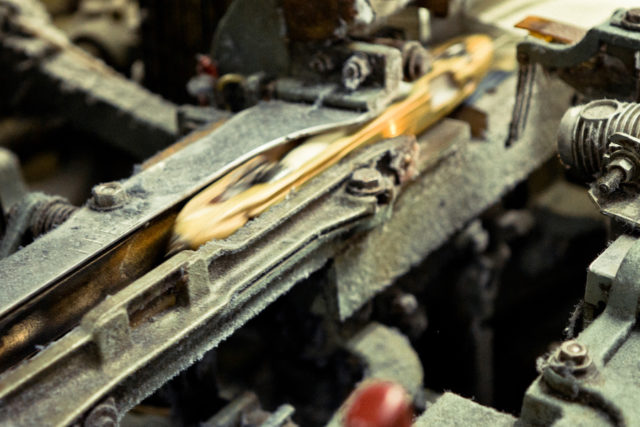
-denim(原材料)の組み合わせ 糸の染色-
縦糸=オーガニックコットン
横糸=オリジナルブレンド(リング麻混 – みぞれリングネップ)
・リング糸とは
C O T T L Eではリーフベインやコーデュロイでアルティメイト・ピマなどの
オーガニック超長綿を使用しているが
デニムに関しては綿の価値観が異なる
超長綿よりもボリューム感、綿の強力(きょうりょく)、
染色での芯白性のある綿が向いているため
トルコ産オーガニックコットンを使用している
– Combination of denim (raw material) and dyeing of yarn –
Warp yarn = organic cotton
Weft yarn = original blend (linen-blend ring yarn – “sleet”-type ring nep)
* What is ring yarn?
COTTLE uses super-long organic cotton such as Ultimate Pima for Leaf Vein and corduroy, but when it comes to denim, different aspects of cotton are valued.
Instead of super-long yarn, we use organic cotton from Turkey because of its superiority in terms of voluminous feel, strength, and the whiteness of cores even after dyeing.

ここで重要なのはリング糸であること
リング糸とはリング精紡糸のことでしめ縄と同じような構造で紡績された糸である
特徴として撚りが少ないためソフトで強度がある上に堅牢度も良い
色落ち、ダメージ加工時にタテ落ちと呼ばれる縦に細かく白線が風合い良く現れる
そして原料の綿繊維がしっかりと紡績されているため糸が伸びにくく膝抜けが起きづらい
また洗濯などで伸びが回復しやすい特徴がある
・オリジナルの横糸
手紡ぎ、手織りのような風合いを出すため横糸にリングネップと
色落ちの経年美化を狙いリネンを混ぜている
数々のブランドのデニム開発に関わった経験から
リネンこそが色落ち、ダメージ加工の際に美しい風合いを生むことを知っていた
だがデニムにおいてリネンというのはデメリットも多い
リネンの混率を増やしすぎると織りキズが発生しやすく
強度も落ち、斜行(生地のねじれ)もすごい 着心地もちくちくする
上記のデメリットをぎりぎり回避できる混率を研究試作し
リネン9%という混率に辿り着いた
The important thing here is that it uses ring yarn.
Ring yarn means ring-spun yarn, which is yarn spun into a structure similar to that of Japanese “shimenawa” rope.
It is characterized by softness and strength due to having few twists, and is also highly durable.
When the fabric is processed for distressed effects, fine vertical white lines, called “tate-ochi,” appear, which gives the material a textured look.
And because the raw cotton fibers are tightly spun, the yarn does not stretch easily, so holes are less likely to open up at the knees.
Furthermore, elasticity quickly returns after laundering.
* Original weft yarn
In the weft yarn, we mix ring nep to create a hand-spun, hand-woven texture, and linen for a color that will fade beautifully with age.
From our experience in the development of numerous brands of denim, we knew that linen was the only material that could produce a sublime texture during the process for distressed effects.
But there are many disadvantages to using linen in denim.
If the proportion of linen in the blend is too high, flaws in the weaving tend to appear, strength is reduced, significant skewing (twisting of the fabric) occurs, and the denim feels prickly and uncomfortable when worn.
We studied and tested different linen ratios and found that 9% was the maximum, as at this ratio the above drawbacks could be narrowly avoided.
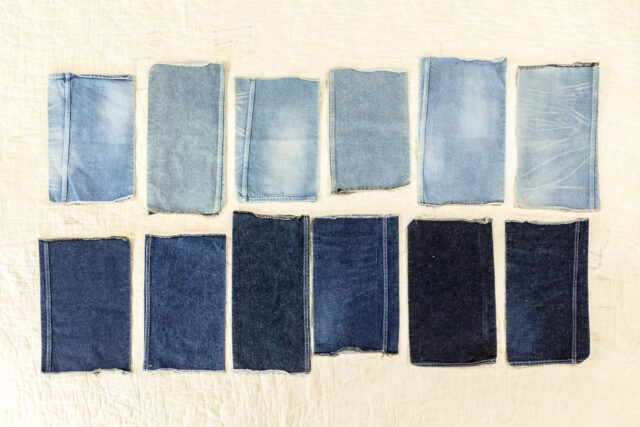
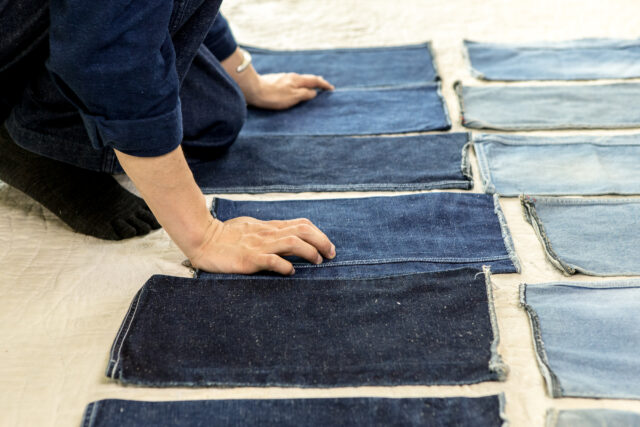
また生地の整理加工として、通常表のみに行う毛焼きを表裏両面に行い
よりスムースな肌触りを実現させた
これは素肌に着用することを前提に何度も肌触りを確認しながら行った
Furthermore, as a finishing process for the fabric, singeing, which is usually performed only on the outside, is performed on both the inside and the outside to deliver a smoother feel to the skin.
We worked on the assumption that the jeans would be worn over bare legs, and checked the feel to the skin over and over again until we were satisfied.

プラスして薬品を使用しないサンフォライズ加工という防縮加工と
斜行を防ぐねじれ防止加工をしている
手工芸的風合いや着古していった時の美しさ、
洋服としての強度やシルエット保持を目指している
原料のチョイス、糸の形状番手(太さ)、インディゴのカラー、織りの密度、セルビッチの柄の再現性
納得いくものができるまで試作研究に3年もの月日を費やした。
C O T T L Eの製品、生地の中で最も開発に時間や費用がかかった思い入れの強い生地である。
In addition, we employed a chemical-free pre-shrink treatment called sanforization as well as an anti-twist treatment to prevent kinking.
We aim to enhance the handcrafted texture, beauty after prolonged wear, while preserving the strength and silhouette of the jeans as a garment.
Choice of raw materials, yarn count (thickness), Indigo color, weave density, and selvage pattern reproducibility
We spent three years on research and testing until we arrived at a level we were happy with.
Of all COTTLE’s products and fabrics, this is the fabric that took the most time and money to develop and one that we feel especially passionate about.
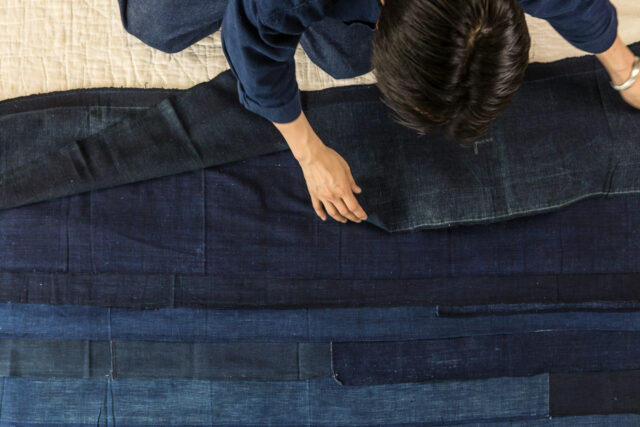
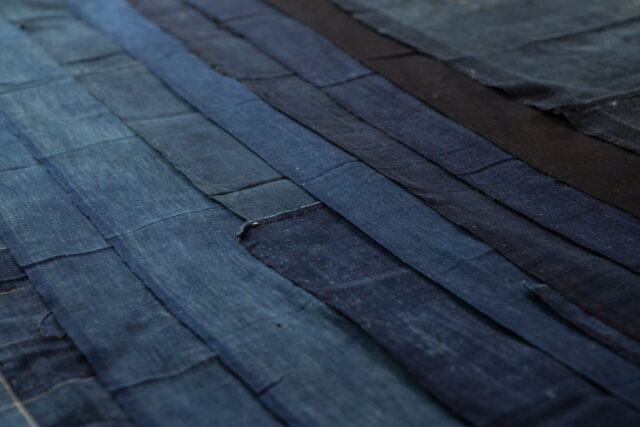
・原料(糸)染色
デニムは織る前に先に糸を染色する先染め織物である。
・インディゴ
縦糸横糸ともにインディゴ染料でロープ染色している。
ロープ染色とはデニム用の染色でロープ状に束ねた400本から600本を
巨大なマシーンでインディゴ染料の入った容器に入れて染めていく
インディゴ染料は空気に触れさせながら酸化させ・つける・空気に触れさすを繰り返すことで深いインディゴへと染まっていく。
* Dyeing of raw materials (yarn)
Denim is a yarn-dyed textile, meaning that the yarn is dyed before weaving.
* Indigo
Both warp and weft yarns are rope-dyed with Indigo dye.
Rope dyeing is a dyeing process for denim in which 400 to 600 threads are twisted into a rope and dipped in a bath of Indigo dye using a huge machine.
Indigo dye oxidizes when exposed to the air, so a deep shade of Indigo is achieved through a repetitive sequence of dipping and airing.
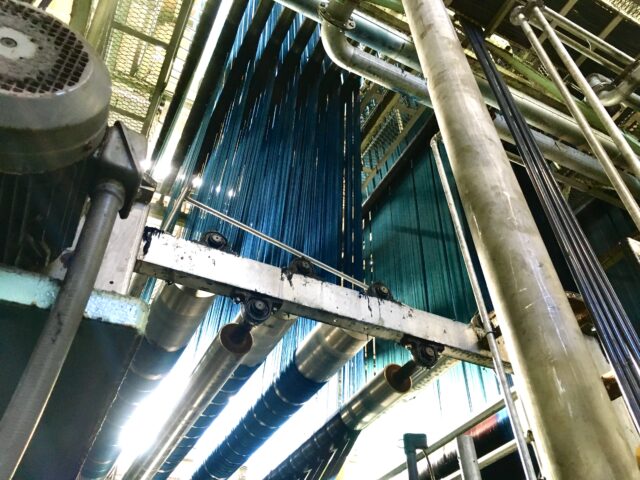
ロープ染色の一番の特徴は中白と呼ばれる繊維の芯は染まりきらないということ。
このことがデニムの色落ち、経年変化へとつながる。
このインディゴはNo.1という国産デニムの初期カラーだ。
ほんのすこしだけ紫がかったダークブルーで独自の雰囲気を持つ。
経年変化後も澄んだ色合いになる。
日本では綺麗めな濃いダークネイビーのデニムが好まれることが多いが
一目でC O T T L Eのデニムとわかる少し癖のある特徴を望んでいた。
初期カラーNo.1にみぞれリネン混・ネップを散らすことで完成している。
The most distinctive feature of rope dyeing is that the core of the fiber, called the white filling, is not dyed.
It is this that leads to the fading and aging of the denim.
This Indigo is a color called “No.1” in Japan, developed and used for earlier versions of domestic denim products.
It is dark blue with slight hint of purple, giving it its own unique look.
The hue becomes even clearer after the denim has aged.
In Japan, many people prefer the pristineness of dark navy denim, but we wanted a somewhat quirky denim, one that would be instantly identifiable as a COTTLE product.
The color “No.1” used for earlier Japanese denim products is completed using “sleet”-type linen-blended nep.”



・セルビッチのベンガラ
セルビッチ用糸=7番単糸をベンガラで手染めしたもの
糸は購入した時はチーズと呼ばれる芯筒に巻かれた状態である。
織り機に使用するために巻いた状態でなければいけないが、
天然染色(手染めする)ために芯筒から糸を外し絡まらないように
束ねて、カセ(枷)にしなければいけない
化学染色ならチーズのまま染色することができるため、
近年このカセをしてくれる業者は激減してしまった。
* Bengala selvage
Selvage yarn =No. 7 single yarn hand-dyed with Bengala
When the yarn is purchased, it is wound around a cylinder, in which state it is called a cheese.
The yarn must be wound for use on a loom, but for natural dyeing (hand-dyeing), it needs to be removed from the cylinder and bound so that it does not become entangled.
Because chemical dyeing can be performed with the yarn still wound as a cheese, the number of companies willing to do this binding has decreased dramatically in recent years.
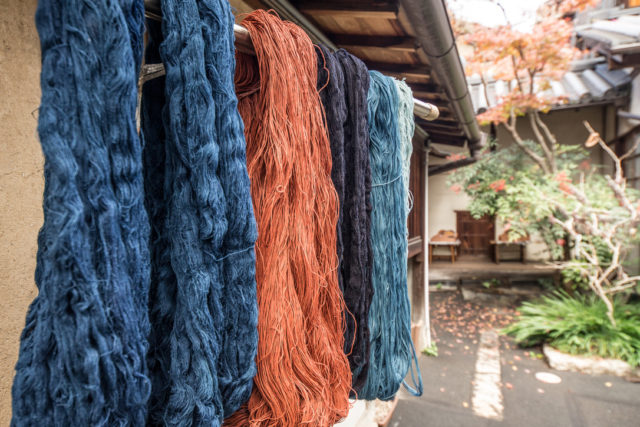
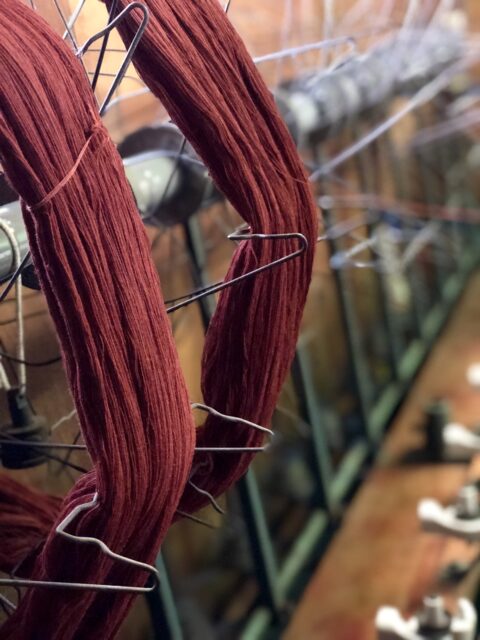
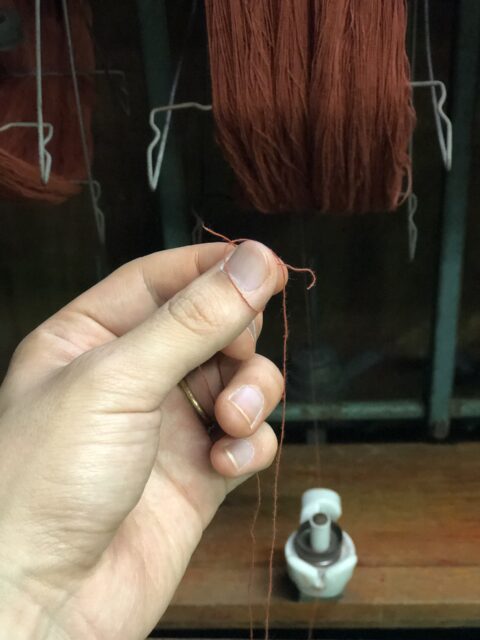
西脇でチーズからカセにしてもらった糸を
倉敷で天然染色で手染めし、強度や滑り、堅牢度を上げるためにをロウ引きし、
また井原でチーズにコーンアップしてやっと織り機へと辿り着く。
糸の染色からデニム生地の整理加工も含めると、完成までに半年以上もの時間がかかる。
Yarns removed from the cheese and bound in Nishiwaki City, Hyogo Prefecture are hand-dyed with natural dyes, as well as waxed to increase strength, slip, and durability in Kurashiki City, Okayama Prefecture, and coned up as a cheese again in Ibara City, Okayama Prefecture. It is only then that they finally reach the loom.
With the dyeing of the yarn and the finishing of the denim fabric included, it takes over six months to complete the entire process.
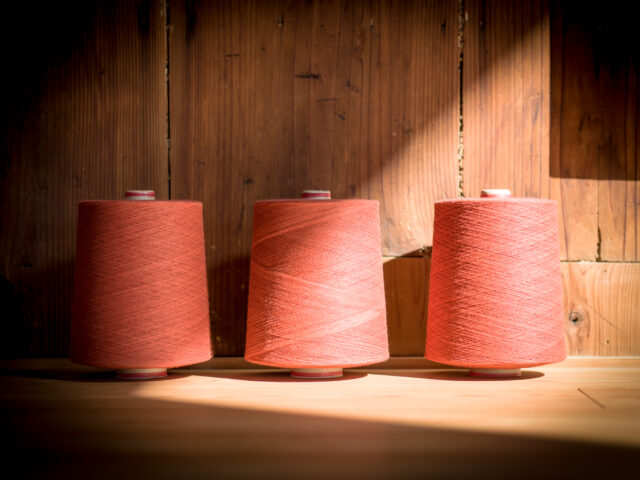
・ベンガラ染について
ベンガラとは赤鉄鋼として産出する酸化鉄が主な成分である。
世界最古の無機顔料と言われており、
日本でも陶器や漆器、瓦や外壁、木材の補強や防腐のために古くから使われている。
岡山でも明治・大正・昭和とベンガラが産出、生産され
ベンガラで彩られた街並みが今でも残っている。
* About Bengala dyeing
The main ingredient of Bengala is iron oxide, which is produced in the form of hematite.
It is said to be the world’s oldest inorganic pigment, and has long been used in Japan for reinforcing and preserving pottery, lacquerware, roof tiles, exterior walls, and wood.
Bengala was produced in Okayama during the Meiji, Taisho, and Showa periods, and townscapes colored with Bengala still exist to this day.

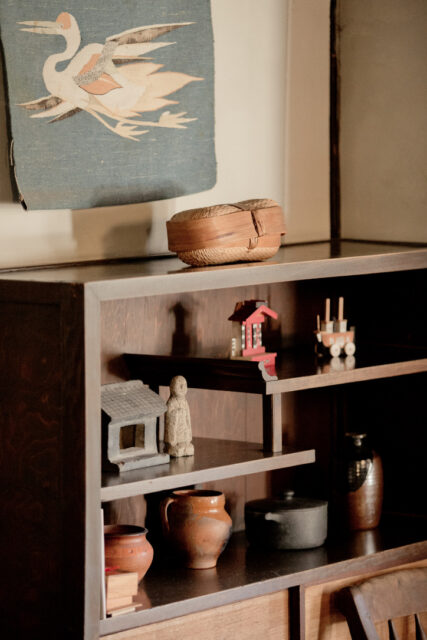
ベンガラの赤色は魔除けや再生の色として考えられていた。
ベンガラは酸化状態であり、空気中で化学的な変化が起こりにくく、耐久性に優れている。
石器時代や7世紀ごろの壁画などの赤色が残っているのもベンガラを使用しているためだ。
セルビッチの原案となった外村吉之助考案のタペストリーにも
ベンガラで染められた糸が使用されていた。
色の耐久性、発色の美しさは他にはない染色である。
手染めのため、糸に色むらがあり、その色調の多彩さもベンガラならではの魅力である。
The red color of Bengala was thought to protect against evil and allow for rebirth.
Because Bengala is already oxidized, it is less susceptible to chemical changes resulting from exposure to the air, making it highly durable.
The red color of cave paintings from the Stone Age and around the 7th century is also due to the use of Bengala.
The tapestry conceived by Kichinosuke Tonomura, which was the original idea for the selvage, also used threads dyed with Bengala.
The long-lasting hue and the beauty of the coloring are unparalleled in dyeing.
Because the yarn is dyed by hand, its coloration is uneven, and this variety of tones is one of the unique appeals of Bengala.
<織りについて>
ロープ染色したリング糸と手染めしたベンガラ糸を特殊シャトル機で織る
・セルビッチデニムとは旧式の織機(シャトル織機)で織り、
生地の端のほつれどめが施されているデニムのことである。
旧式の織機で織られたデニムは生地幅が80センチしかなく
通常のW幅デニムが150センチ幅に対し2倍以上の生地メーターを使用する。
C.T.L SELVEDGE DENIM 11.3ozは外村吉之助考案の柄をセルビッチにしている。
<About the weaving>
Rope-dyed ring yarns and hand-dyed Bengala yarns are woven on a special shuttle loom.
* Selvage denim is denim that is woven on an old-style loom (shuttle loom) using a process that prevents fraying.
Denim woven on an old-fashioned loom has a fabric width of only 80cm, requiring more than twice a length of fabric as compared to others to produce a regular double-width (150m) denim.
C.T.L SELVEDGE DENIM 11.3oz is selvaged with a pattern devised by Kichinosuke Tonomura.

通常のセルビッチは生地端の縦糸を色を変えることで生地端にシンプルな耳ができる。
外村吉之介の柄をセルビッチ耳にするため
シャトル織機にジャガード装置を取り付けた特殊な織機で織っている。
この旧式のシャトル織機は時間、技術(機織り、機械管理)が必要とされるが
手織りのような柔らかな風合いに織ることができる。
このセルビッチデニムを1日に織れる反数はわずか0.8反 (約40m)しか織れない(1時間に約5メーター)
Typical selvages are simple ears at the edge of the fabric, which are achieved by using a different color for the warp yarn at the fabric edge.
The selvage ears are woven into Kichinosuke Tonomura’s pattern using a special shuttle loom featuring a Jacquard attachment.
Using this old-style shuttle loom requires time and skill (for weaving and loom control), but results in denim with a soft, hand-woven feel.
Only 0.8 “tan(approx. 40 m)” of this selvage denim can be woven per day (about five meters per hour)
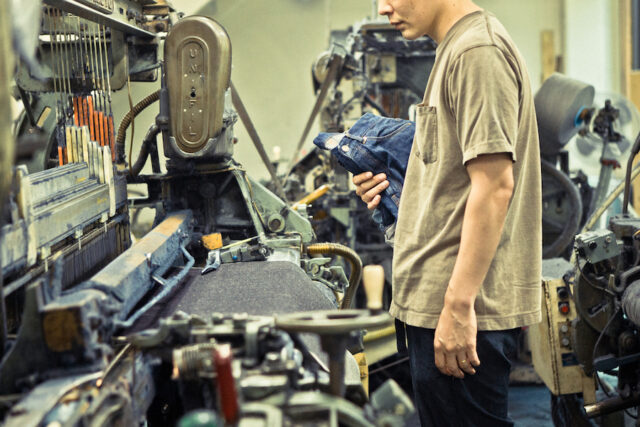
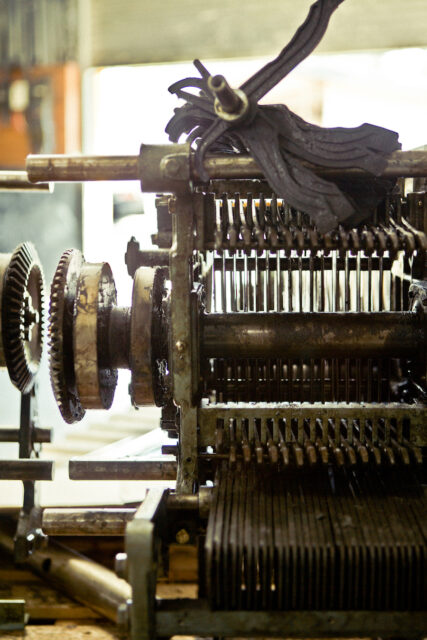
<縫製について>
・ステッチ糸
縫製に使用しているUJコアとは
ポリエステル100%長繊維糸をコア(芯)にして
その表面にsupima綿100%のわたをラッピングさせた重複構造のミシン糸である。
一般的な綿/ポリエステルコアー糸に比べ綿の割合が多い。
このことにより経年変化やダメージ加工による綿糸の風合いを残して糸の強度も確保している。
洗濯や製品染色・加工による変化を細かく研究、計算された特別なミシン糸で他糸とは次元の違う
クオリティである。
<About sewing>
* Stitching thread
What is the UJ core used for sewing?
This sewing thread has an overlapping structure with a core of 100% polyester filaments and 100% supima cotton wadding wrapped around its surface.
The proportion of cotton is higher than that of typical cotton/polyester core threads.
This makes it strong and preserves the texture of the cotton during the distressing process or as it ages.
We studied in detail the changes caused by washing, dyeing, and processing, and the special sewing thread we developed based on our calculations delivers a different dimension of quality compared with other threads.

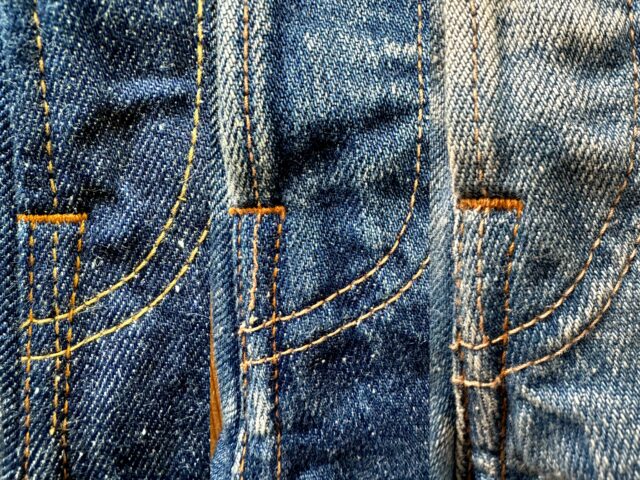
COTTLEのデニム製品には
金茶からピンクがかったベージュへと変化していくS J520と
茶オレンジから明るいオレンジに変化していくM552、2色を部分ごとに分けて使用している。
ベンガラのセルビッチに合わせてD H−167も使用している。
インディゴ汚染が少なく褐色しない特性を持つ。
その他内側のロック糸やネームや革パッチ付けのために全部で7種類のミシンの糸を1着に使用している。
COTTLE denim products feature two colors that are used for different parts.
SJ520, which fades from a golden brown to a pinkish beige, and M552, which fades from a brown-orange to a bright orange.
We also use DH-167 to match the Bengala selvage.
There is little staining from the Indigo and it does not turn brown.
In addition, a total of seven different sewing machine threads are used in a single garment, for the inner lock threads and for affixing the name, leather patch, and so on.
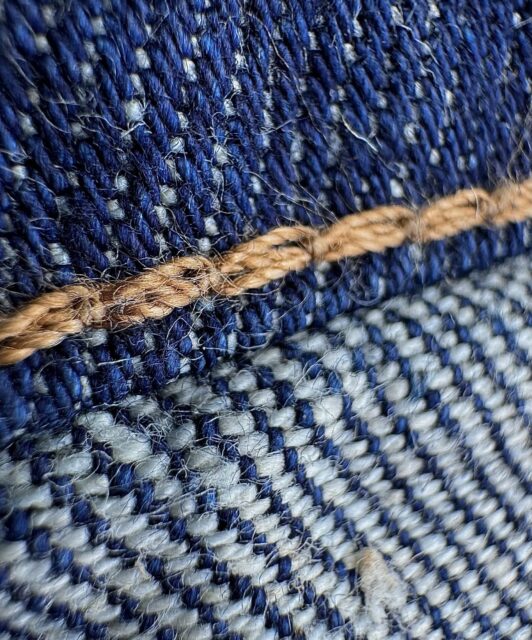
・縫製仕様
デニム製品にはオーセンティックなルールが存在する。
例えば5ポッケトジーンズの仕様であったり、隠しリベットであったり。
作業着として大量生産の工業製品として生まれたジーンズ
先人が築いたルールをマークしつつ正確緻密な縫製と細やかな作りになるようにデザインした。
かといって正確なヴィンテージレプリカは目指していない。
* Sewing specifications
Denim products are subject to rules for authenticity.
Examples are the five-pocket jeans specification and hidden rivets.
Jeans came into being as a mass-produced industrial product for use as workwear.
We designed our products to be precisely sewn and finely crafted while still adhering to the rules established by our predecessors.
That said, we are not aiming for exact vintage replicas.
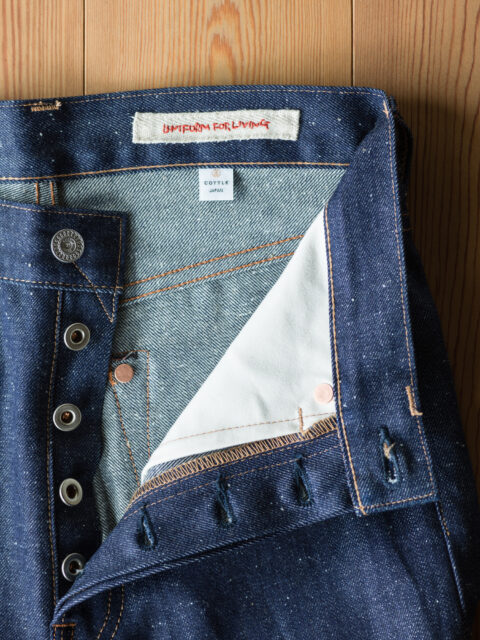
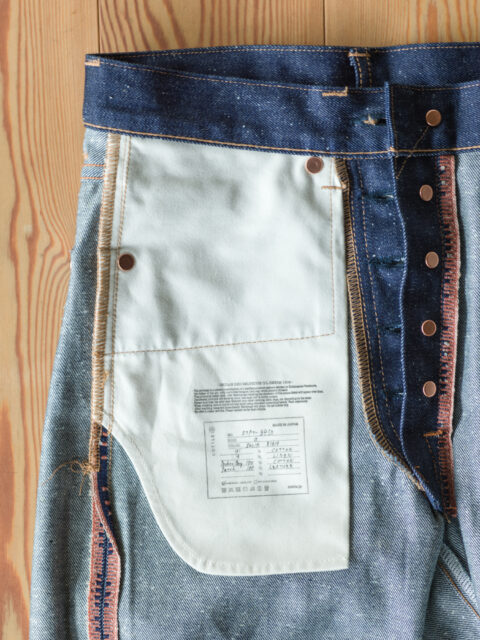
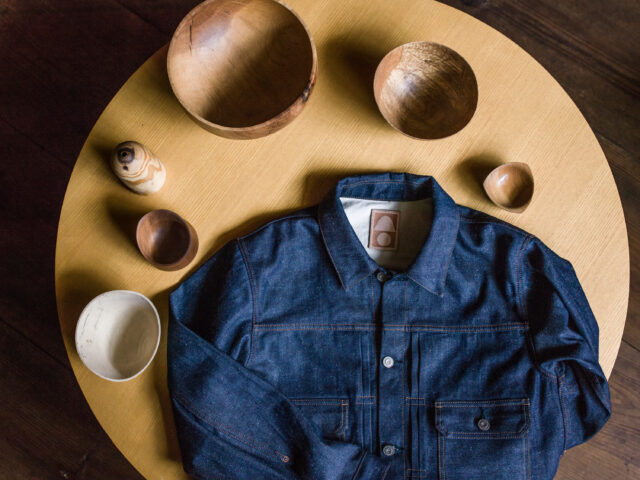
U F L*の定義に沿って
無駄のない定番的デザインと用の美としての機能性と着心地の追求をしている。
一見普通に見えて そうでないものであること。
細かく計算された仕様とシルエットをより多く着てもらいたい。
また自分で考えたものを自分たちで作るという考えから
C O T T L Eのアトリエの中で
設計図(パターン)、裁断(カッティング)、縫製(ソーイング)、特殊(リベット、タックボタン、ボタンホール、カンドメ)、手作業(スペックスタンプ、下げ札)、仕上げを行う
[補足]
*UFL – UNIFOM FOR LIVING
COTTLEには2つのラインナップがある
UNIFORM FOR LIVING=世の中に存在する生地、服をCOTTLEの解釈で作る
SenkohSuiu=世の中にない生地を0から作る 芸術的表現
In line with the definition of UFL*, we pursue functionality and comfort through lean, classic designs and the beauty of use (beauty in utilitarian objects).
We strive to create products that look ordinary but in fact are not.
Our goal is for more people to wear our jeans characterized by their precisely calculated specifications and their silhouettes.
Also, based on the principle of putting our ideas into practice ourselves, we produce blueprints (patterns), do the cutting and sewing, add special features (rivets, tuck buttons, buttonholes, and bartacks), achieve manual tasks (attaching spec stamps and labels), and complete the finishing touches all in the COTTLE atelier.
[Note]
*UFL-UNIFOM FOR LIVING
COTTLE offers two lineups.
UNIFORM FOR LIVING: Re-creating existing fabric and clothing with a COTTLE interpretation.
SenkohSuiu: Artistic expression creating fabric from scratch

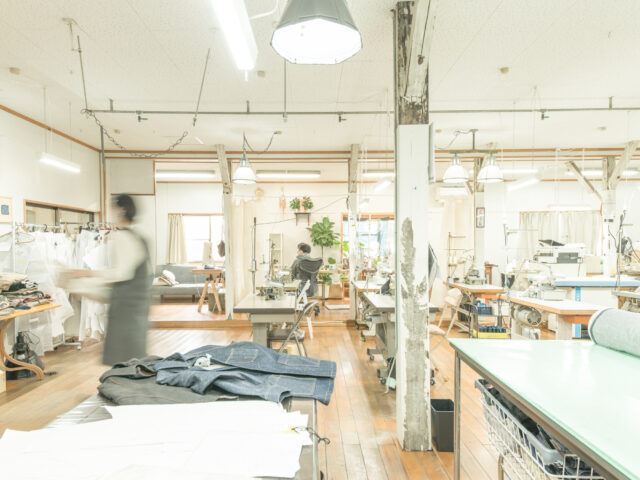
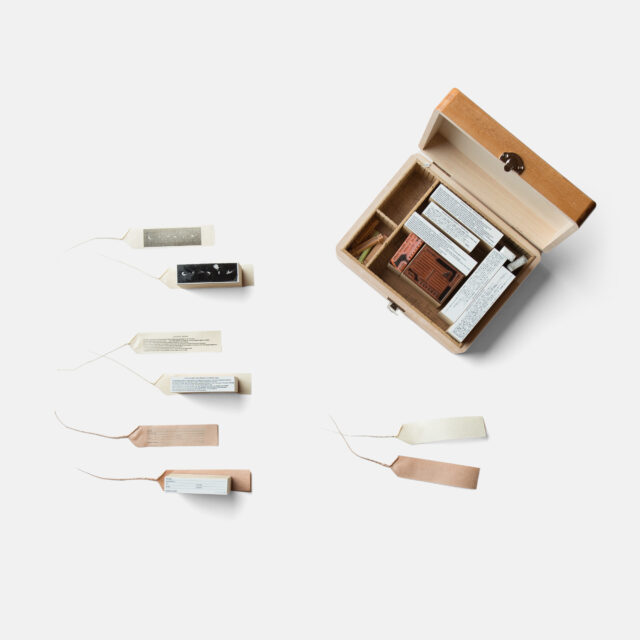
<製品加工について>
C.T.L SELVEDGE DENIM 11.3oz シリーズには
SOLID RIGID(未洗い)、WASHED INDIGO(ワンウォッシュ)
DARK INDIGO、LIGHT INDIGOと4種類ある。
全て同じデニム生地からなるが、まるで表情が違うのだ。
<About product processing>
The C.T.L SELVEDGE DENIM 11.3oz series comes in four versions: SOLID RIGID (unwashed), WASHED INDIGO (one wash), DARK INDIGO, and LIGHT INDIGO.
Although they are all made of the same denim fabric, they each have their own distinct look.

SOLID RIGIDは0から生地を育てていく楽しみと他にはないパキッとした潔さがある。
WASHED INDIGOは肌触り、風合いが一気に優しくなる。
C.T.L DENIM 11.3ozにおいてWASHED INDIGOこそが一番素材感を
感じることができる。
トーンはSOLID RIGIDより2トーンほど明るくなり色が冴え、
表面は洗いによるしぼ感が浮かび綿毛がホフホフしている。
SOLID RIGID offers customers the pleasure of evolving the fabric from scratch, as well as unrivaled crispness and pristineness.
WASHED INDIGO delivers a much more gentle feel and texture.
It is the ideal way to experience the feel of the C.T.L DENIM 11.3oz material.
The tone is two levels lighter than SOLID RIGID, the colors are more vivid, and the surface is wrinkled and fluffy as a result of washing.
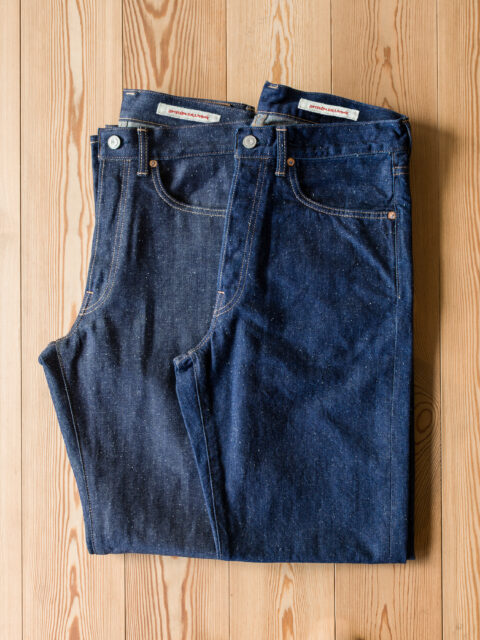

ヴィンテージ加工はDARK INDIGO 、LIGHT INDIGOの2色
ヴィンテージ加工は人工的に色落ちや擦れ、ひげなどを施した加工である。
その加工方法や技術は多彩であり、デニムを加工する技術者が多くいることも
児島の特徴である。
どう加工するかでいかようにも見え方、イメージを変えることができる。
C O T T L Eでは長年着用したようなより自然な加工をしている。
それに加えて単調にならないよう細かい髭やつまみなどを施している。
Our vintage-finish jeans are available in two colors, DARK INDIGO and LIGHT INDIGO
Vintage-finishing is a process in which the color is artificially faded, the fabric is rubbed to produce wear, and features such as whiskers are added.
A wide variety of methods and techniques are employed, and the Kojima district in Kurashiki is home to many experts in treating denim.
The look of a pair of jeans, and the image they project vary according to how they were processed.
COTTLE utilizes natural finishing techniques that make the jeans look as though they have been worn for many years.
We also add whiskers and tabs to create unique touches.
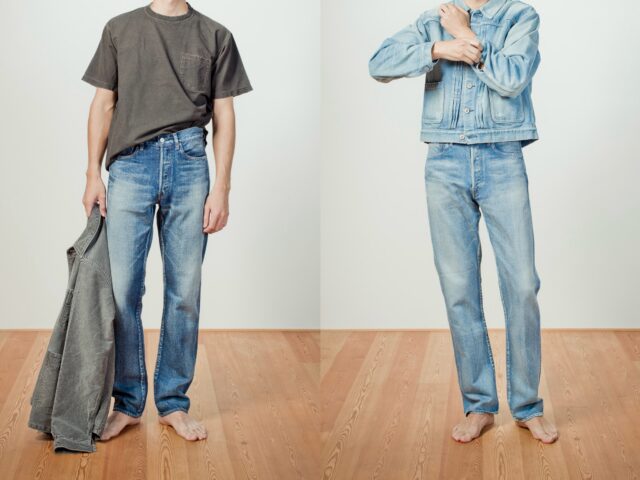


<パーツ付属品について>
デニムには、タックボタン、リベット、革パッチなど沢山の付属品がついている。
タックボタンは亜鉛合金を鋳造したオリジナルである。
タックボタンは既製品と割と手の出しやすいプレス製法によるオリジナル品などがあるが、
こちらは軽くてチープな印象があった。
一目で日本の技術や細やかさが伝わるようなタックボタンにしたかった。
直径1.6ミリの中に繁栄を表す円の連なりが23個彫られている。
一つ一つの円が鎖状に連なる細工は是非虫眼鏡で見てほしい。
加工やあたり感で内部の銅コーティングが覗く、
ステッチの金茶とリンクするよう計算して作られている。
<About accessory parts>
Denim products feature numerous accessories such as tack buttons, rivets, and leather patches.
Our tack buttons are zinc-alloy-cast originals.
Tuck buttons are available off-the-shelf, or there are also affordably-priced, press-formed original ones. However, both are lightweighted and have a cheap look and feel.
We wanted our tack buttons to convey Japanese skill and attention to detail at a glance.
Our design features a round chain of 23 interlocking circles, which signify prosperity. Each one has a diameter of just 1.6mm.
The craftsmanship of each of the circles in the chain is worth closer inspection with a magnifying glass.
Because of the finish and the way the surface layer is rubbed, the copper coating on the inside seems to be peeking out at us, and our intention with this design, which was the result of meticulous calculations, was to link it with the golden brown of the stitching.
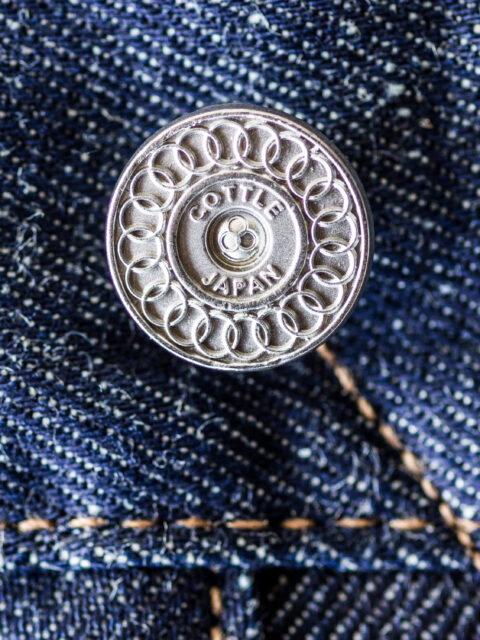

革パッチは瀬戸内海、児島地区の山、海。島の地形をランドマークとして表現している。
わたしたちが普段感じているこの土地の風土を抽象的に伝えるためだ。
The leather patch design is inspired by the mountains and sea of the Seto Inland Sea and the Kojima district. It evokes the topographies of the islands in the Seto Inland Sea, which serve as landmarks.
Our aim was to provide an abstract depiction of the atmosphere of this region that we experience every day.

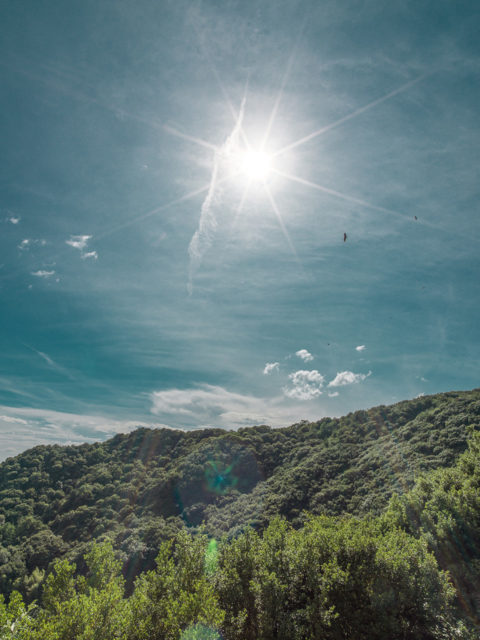

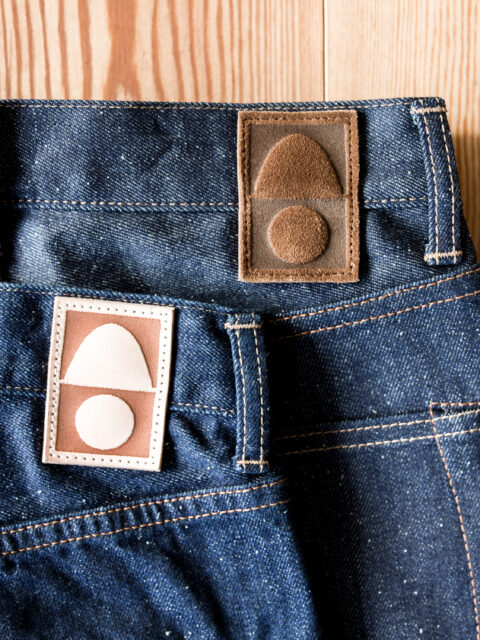
<倉敷本染手織研究とC O T T L E>
– 倉敷本染手織り研究所について –
倉敷本染手織研究は昭和28年に
外村吉之介(とのむらきちのすけ)が自宅を開放し、
倉敷民芸館附属工芸研究所として設立された
健康でいばらない美しい布を生み出す工人育成のための学校である
一年間下宿をしながらものつくりに励み
生活の豊かさや知恵を糸、布の染織を通して学ぶ
Kurashiki Dyeing, Spinning, and Weaving Studio and COTTLE
– About the Kurashiki Dyeing, Spinning & Weaving Studio –
The Kurashiki Dyeing, Spinning & Weaving Studio was established in 1953 by Kichinosuke Tonomura when he opened his home to the public as a crafts research institute affiliated with the Kurashiki Folk Crafts Museum.
It is a school for the cultivation of artisans who can produce healthy fabrics with subtle beauty.
Students stay at a boarding house for a year and learn about the richness and wisdom of daily life through the dyeing and weaving of yarn and cloth.
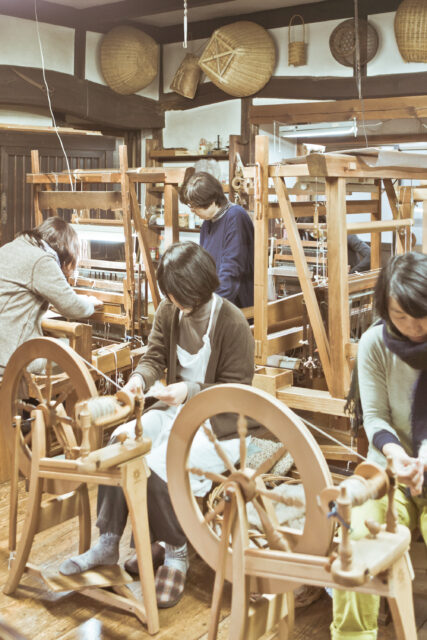
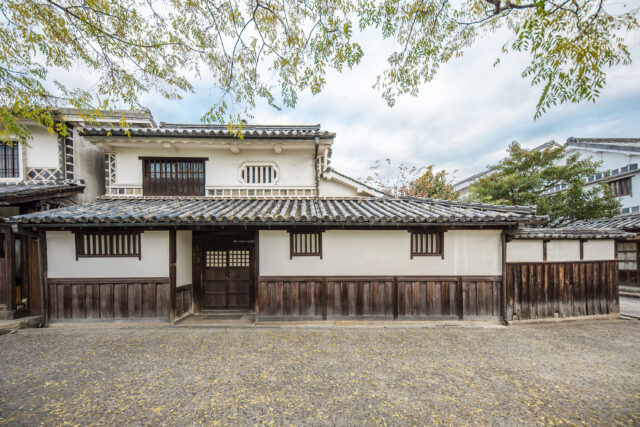
としあきは同じ市内(倉敷)で活動していた本染手織研究に興味があり
現館長の石上先生に連絡をとり
ものつくりの思想に深く感銘を受けた。
素材・天然染色・手作業・布の価値観など多くの影響を受けている。
Toshiaki Watanabe, CEO of COTTLE, was interested in the activities of the Kurashiki Dyeing, Spinning & Weaving Studio located in the same city of Kurashiki as COTTLE, and contacted Director Ishigami of the studio. He was deeply impressed with Ishigami’s philosophy of monozukuri, which means craftsmanship or manufacturing.
Our materials, our approach of using natural dyes and working by hand, and the qualities of fabrics that we emphasize all reflect the influence of the Kurashiki Dyeing, Spinning & Weaving Studio.
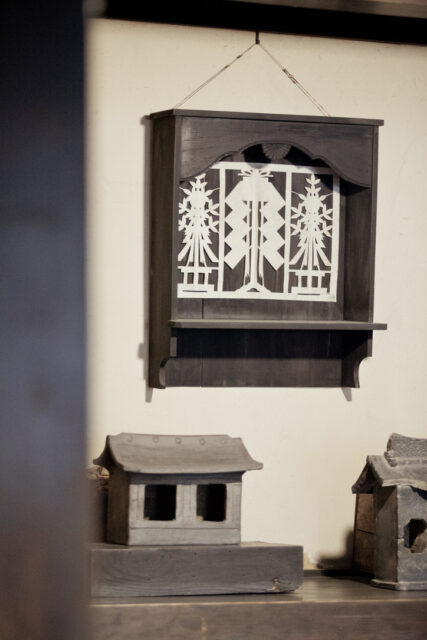
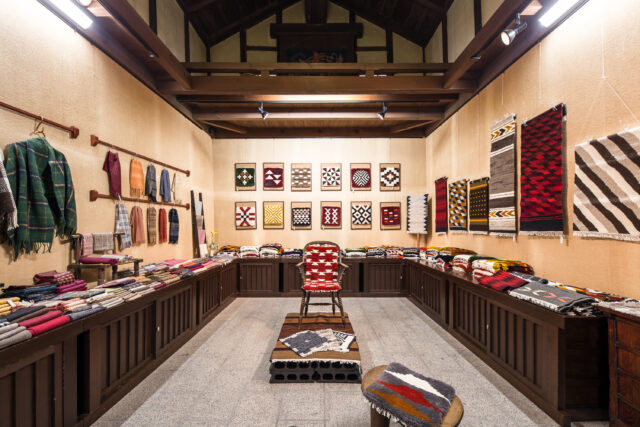
外村吉之介の言葉はC O T T L Eのクリエーションにも
指標を照らしている。
健康でいばらない美しさをそなえた布
ものをつくる知恵と喜びと責任
無地極上など
生地開発の途中で悩みヒントを探しに民藝館に行った時
外村吉之助の言葉が不意に飛び込んでくる。
どきり とするのだ。
道に迷った時の道標のように大切に心に刻んでいる。
The words of Kichinosuke Tonomura also provide clues as to what COTTLE places importance on in its creative endeavors.
Healthy fabrics with subtle beauty
Wisdom, joy, and responsibility from monozukuri
Perfect simplicity
When Toshiaki went to the Kurashiki Folk Crafts Museum while experiencing difficulties in the development of the fabric, the words of Kichinosuke Tonomura suddenly enveloped him.
It was a startling experience.
Those words are now imprinted on our soul, serving as guideposts when we feel we are losing our way.
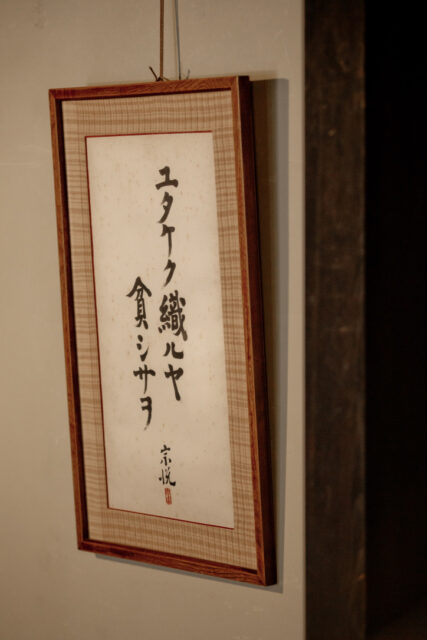
C.T.L SELVEDGE DENIM 11.3oz は本染手織研究と共にお互いの技術を活かして
一緒にものづくりを行う活動を提案したことをきっかけに誕生した。
本染手織研究所の伝統的な柄をデニムのセルビッチ柄として起用した。
C.T.L SELVEDGE DENIM 11.3oz was born out of a proposal to the Kurashiki Dyeing, Spinning & Weaving Studio to collaborate, leveraging each other’s skills to produce things together (monozukuri).
We used one of the traditional patterns from the Studio as the selvage for the denim.

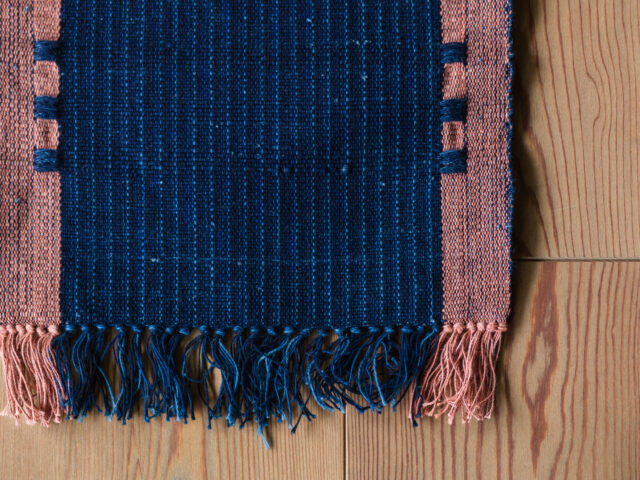
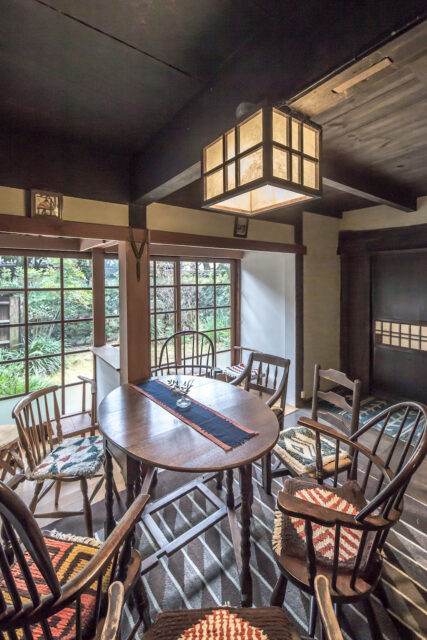
また本染手織研究でおられた布を現代的な洋服や小物として製作する活動、
過去のアーカイヴを現代に復刻する活動も続けている。
And we continue to transform cloth originating from the Studio, and to restore archives from the past into modern forms.
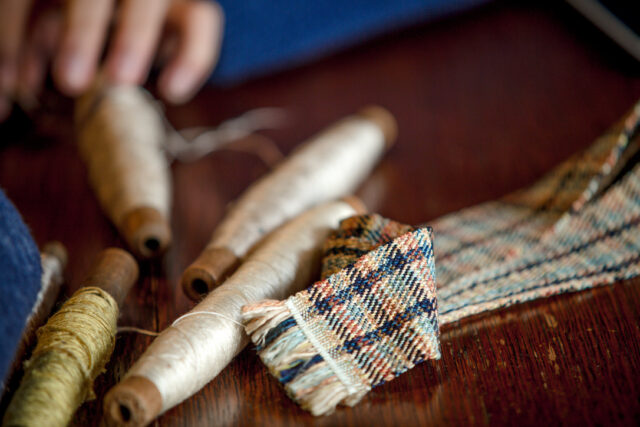

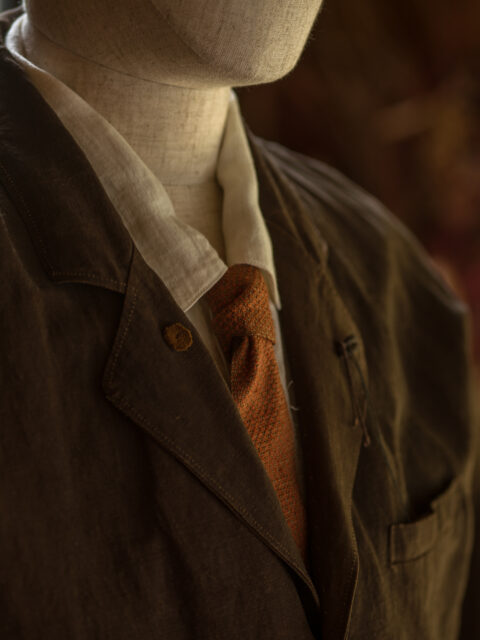
エピローグ
C.T.L SELVEDGE DENIM 11.3oz には
私たちの思想だけではなく
この土地の歴史背景や風土
技術者たちの英知
時の変化
着用する人の身体、生活 記憶
膨大な情報が刻まれるポートログ(ビッグデーター)である。
洋服として完成した時がスタートであり
記憶が刻まれ続ける。
「 何気ない日常生活の中にこそ、最高の贅沢は潜んでいる 」
C.T.L SELVEDGE DENIM 11.3oz を通してそのことを感じてほしい。
Epilogue
C.T.L SELVEDGE DENIM 11.3oz is a “port log” containing massive amounts of information (big data),
not only our own ideas, but also the historical and natural background of this region,
the wisdom of the local artisans, changes over time, and the bodies, lives, and memories of wearers.
The time of its completion as a garment is just the beginning,
with memories continuously being etched into it from then on.
“The ultimate luxury is in dressing casually every day.”
We would love for you to experience this for yourselves with C.T.L SELVEDGE DENIM 11.3oz.
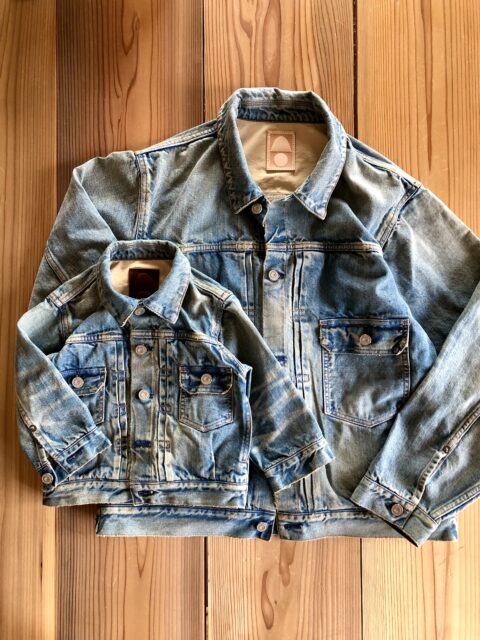
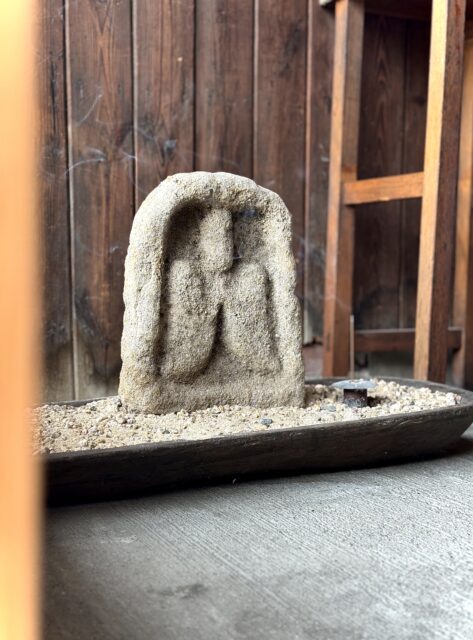
Published at: 2024-04-17


